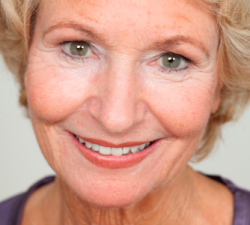TM, Stress and Addiction

On the 4th of July I watched the fireworks from the Oakland hills, where I enjoyed a panoramic view of the entire San Francisco Bay area. From that broadened perspective, the chaos of civilization looked like a perfectly coordinated organism, the ever-flowing traffic the veins and arteries, the pulsing Golden Gate bridge display as the heart, the firework displays of at least nine different townships firing off like neurons in what appeared to be a beautifully coordinated synchrony.
Sometimes I wish that researchers and doctors—who focus so intently on a particular fragment of the human body, on one broken or painful area—could draw back and see our minds, bodies and emotions from a wider perspective, as a perfectly functioning organism with every part working in perfect harmony with the other.
It seems that the cost of the modern, fragmented approach to medicine, which rarely views the individual as whole person, is becoming unsustainable, both monetarily and in terms of human suffering. Take a recent feature aired on Good Morning America by Aditi Roy, which revealed that there is a sharp rise in deaths in women who have overdosed on pain medicine. The stats are alarming:
- More women die from prescription pill overdose than cervical cancer.
- A new report from the Centers for Disease Control says that a woman is admitted to the ER for a prescription pill overdose every three minutes.
- The number of deaths from prescription pain-pill overdose has jumped 400% between 1999 and 2010.
Why the dramatic rise in death in women from overdosing on prescription drugs, especially painkillers? First of all, doctors say that women are more likely to suffer from painful conditions such as fibromyalgia and migraines, often treated with prescription pain pills. And from there women are more likely than men to overdose due to lower body mass. So some women are taking the medications for their prescribed purpose, to relieve pain, with fatal consequences. Clearly we have a healthcare crisis when a patient with a headache takes the prescribed medicine and ends up dying.
More worrisome, CDC experts report that there doesn’t seem to be a significant rise in conditions that might require severe prescription painkillers. “Rather, the pills are increasingly used to treat moderate pain that might well be eased by other means, like physical therapy,” the New York Times recently reported. In other words, a pain problem that could be cured through therapeutic massage and exercise is being treated with pills that can kill.
The CDC recommends that doctors educate their patients on the risks of painkillers. Surely, this is a good idea. Yet words about the dangers of addiction are not going to cure the underlying stress that makes a woman become addicted to painkillers in the first place.
And clearly, for many women who are overdosing due to addiction or other problems, rising stress levels are a major component. Case in point: in the NY Times article “Sharp Rise in Women’s Death from Prescription Drug Overdose of Painkillers, reporter Sabrina Tavernise says that Appalacian women who were addicted to painkillers “blamed the changing nature of American society. The rise of the single-parent household has thrust immense responsibility on women, who are not only mothers, but also, in many cases, primary breadwinners. Some who described feeling overwhelmed by their responsibilities said they craved the numbness that drugs bring. Others said highs made them feel pretty, strong and productive, a welcome respite from the chaos of their lives.”
In other words, the painkillers were not only removing the pain, but providing emotional support for women who are under tremendous stress. But at what price? Dr. Nora Volkow, director of the National Institute on Drug Abuse, says that women are more likely than men to be given prescriptions of psychotherapeutic drugs, like antidepressants and antianxiety medications—and thus many of the overdose deaths are due to taking a combination of these drugs and pain medication.
It seems to me that doctors and researchers need to step back a moment and look at the whole woman, to see what will ease her stress and pain in a holistic and natural way. What a woman under stress needs is a way to relieve anxiety, depression, pain and addiction all at the same time—without the harmful side effects.
That sounds like a tall order—impossible, really. Yet by stepping back and seeing the whole woman, you can see that if we had a way to dissolve stress, to go deep within and experience our true nature, which is unbounded, infinite and whole, then every aspect of our lives would improve. A little like taking care of a plant—if you water the root, every part of the plant will blossom.
The Transcendental Meditation technique allows us to do exactly that—to transcend and experience our true nature which is unbounded, infinitely happy and powerful; to release stress and heal our minds, bodies and emotions.
The research backs this up—showing that women who practice the Transcendental Meditation technique experience significantly less addiction, pain, anxiety and depression. Let’s look first at addiction: Norman Rosenthal, M.D., an NIH senior researcher and clinical professor of psychiatry at Georgetown Medical School who has a private practice in Washington, D.C., has prescribed the Transcendental Meditation technique to his patients who suffer from anxiety, stress, depression and addiction. In his book Transcendence: Healing and Transformation through Transcendental Meditation, he writes about the research on TM and addiction, “Transcendental Meditation showed a large effect in treating both cigarette smoking and addiction to street drugs, with other treatments examined coming in a distant second.”
Dr. Pamela Peeke, M.D., Ph.D., also an NIH researcher and author of The Hunger Fix, read Dr. Rosenthal’s research on TM and addiction and decided to start TM herself. From there, she was so impressed with the results that she decided to study how TM made it possible for people to overcome addiction by enhancing the prefrontal cortex, the area of the brain that helps us to say “no.”
“I found that TM practice had a profound influence on the ability to maintain vigilance and calm,” she says. “It also helped people do the one thing that is so difficult in addiction—to adapt to life’s stresses without resorting to self-destruction. TM helps them stay on track by augmenting the pre-frontal cortex.”
The research on Transcendental Meditation as a means to relieve anxiety, depression and the fight-or-flight stress response is equally strong.
And it’s important not to forget that the practice of Transcendental Meditation has been shown to directly relieve pain itself. According to Dr. Christopher Clark, M.D., co-author of Contemporary Ayurveda, “Research shows that regular practice of the Transcendental Meditation (TM) technique reduces back pain, headache and chronic pain. The TM technique also resets the body’s perception of pain and anticipation of pain. Research also shows that the Transcendental Meditation technique will reduce pain-related stress, insomnia and even depression. These chronic symptoms are often associated with low back or chronic back pain, which afflicts up to 40% of the population at some point in their lives.”
For thousands of women today, the practice of TM is like an oasis in the desert. It gives us that important re-charge time, when we can dive within and get in touch with our deepest, most authentic selves, and at the same time draw back from the hectic daily rush and experience the exquisite beauty and harmony of mind, body and spirit. We not only deserve this time for ourselves, but we need it to stay healthy and strong in a changing world.
About the Author
Linda Egenes writes about green and healthy living and is the author of six books, including The Ramayana: A New Retelling of Valmiki’s Ancient Epic—Complete and Comprehensive, co-authored with Kumuda Reddy, M.D.
More Posts by Linda
- Tired and Burned Out? Transcendental Meditation Can Help: An Interview with Dr. Nancy Lonsdorf, MD
- Worried About the Future? Six Ways to Calm Your Anxiety
- What Do You Carry in Your Self-Care Tool Kit?
- Five Strategies for Family Caregivers
- From the Streets to College in Four Months: The Communiversity of South Africa Empowers Underserved Youth in Cape Town





